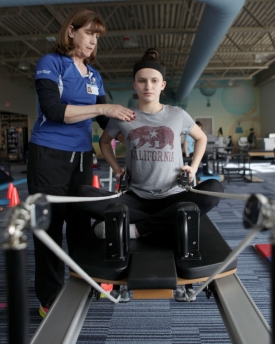understanding treatment options for scoliosis

Receiving a scoliosis diagnosis for your child can be emotional and overwhelming. At Dayton Children’s, our comprehensive spine team is here to support you every step of the way - dedicated to providing the best care for your child, from diagnosis to treatment and beyond.
treatment options for scoliosis
Scoliosis treatment is not one-size-fits-all. The best plan for your child will depend on several factors, including:
- The degree of the curve (how severe the curve is)
- Your child's age and how much more they are expected to grow
- Whether the curve is progressive (getting worse over time)
Your child's doctor will work closely with you to develop a treatment plan that fits their specific need.
 observation and monitoring
observation and monitoring
For children with mild scoliosis, the curve might not require immediate treatment. Instead, regular monitoring will be used to ensure the curve doesn’t worsen or get more severe:
- Approximately every six months, your child will have a physical exam and X-rays to check for changes in the curve.
- Observation is ideal for children with mild curves or those who are nearly finished growing.
Observation is a good option for scoliosis that is unlikely to progress. During this period, your child’s care team may recommend certain exercises or physical therapy, like Scolio-Pilates, to keep your child’s back strong and flexible.
bracing of scoliosis
For moderate scoliosis, particularly if your child is still growing, a brace can help prevent the curve from worsening. A custom-fitted brace is worn around your child’s torso. The brace doesn’t straighten the spine but can stop the curve from getting worse.
About 20% of kids with scoliosis will need to wear some type of back brace.
Bracing is typically used for children with a spinal curve between 25 to 45 degrees, especially if they are still growing.
While a brace may need to be worn for several hours a day, most children can still participate in daily activities, including school and sports. There are different types of braces, and we will help determine which one is the best fit. Our team will ensure the brace is comfortable and adjusted as your child grows.








